Table of Contents
We explain what the Cold War was, and the superpowers that were involved. In addition, we explore its characteristics, and major conflicts.

What was the Cold War?
The Cold War was a period of tension between the United States and the Soviet Union (USSR) that lasted from the end of World War II in 1945 to the dissolution of the USSR in 1991. This clash was brought about by the existence of two opposing economic and social systems: capitalism (upheld by the United States) and communism (upheld by the Soviet Union).
Dozens of countries around the world supported either of the two superpowers or fell under their influence, and the political world map came to be divided into two large antagonistic blocs. This is referred to as a "bipolar world".
The Cold War draws its name from the fact that the conflict never escalated to a direct confrontation between the United States and the USSR. However, this period experienced what according to George Orwell was “ a peace that was no peace”. The whole world feared the rivalry between nuclear-armed superpowers.
Faced with the risk that direct armed combat entailed, the United States and the USSR engaged in "proxy wars", that is, armed conflicts in other countries (especially in Asia, Africa, and America). In these proxy wars, both the United States and the USSR intervened by providing economic and military aid to local factions in order to gain influence in the international political arena.
The rivalry between the two superpowers led to a great struggle for dominance and power display, which ultimately spurred the industrial development of both countries beyond their military and political objectives. The USSR as well as the United States sought to demonstrate that their systems were the best to guarantee the welfare of their citizens and the economic progress of the political communities. In this way, the rivalry was also expressed in the economic and cultural spheres.
The Cold War began in a clear and definite way in 1947, following a rapid process of deterioration in the relations of World War II Allies, and reached its peak between 1948 and 1953. After several periods of détente and confrontation, Gorbachev's rise to power in the USSR triggered a process that ended with the disintegration of the USSR in 1991.
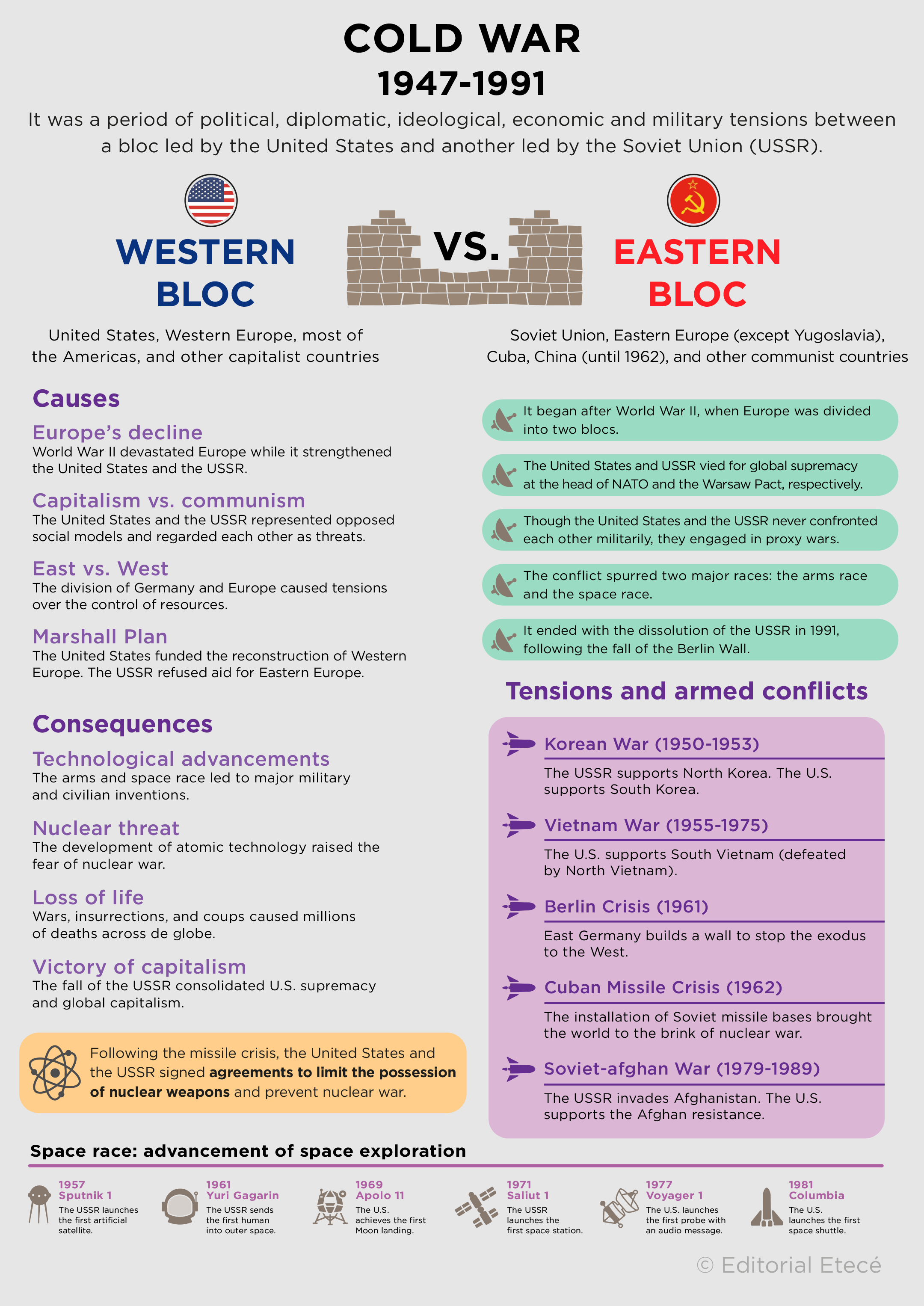
Ideological warfare: capitalism vs. communism
The Cold War was also an ideological war, in which the values of two opposing systems competed in political as well as in economic terms:
- Capitalism. It is based on the right to private property and investment aimed at gaining economic benefits. From an ideological stance, capitalism defends individual initiative based on the freedom principle, and criticizes communism for restraining individual initiative.
- Communism. It is based on the common ownership of resources and the means of production, and equal distribution of their benefits. It criticizes capitalism for being grounded in the exploitation of the working class for the benefit of a few individuals who accumulate goods, the means of production and capital.
Characteristics of the Cold War
Among the main characteristics of the Cold War are:
- It was a period of tension between the United States and the Soviet Union between 1945 and 1991, due to the political competition between both superpowers.
- Although during the conflict the US and the USSR did not engage in a direct armed confrontation, the world was divided into two large blocs (western-capitalist and eastern-communist) in which the superpowers imposed their influence.
- The US and the USSR had nuclear weapons of mass destruction, and the consequences of the threat of a direct confrontation were feared across the world for over four decades.
- Among the major conflicts in the political arena, the powers intervened in the Korean War, the Cuban Missile Crisis, and the Vietnam War.
- In the economic sphere, competition between the two superpowers led them to develop different production models, international economic organizations and, especially, engage in the arms and a space race.
- In culture, both the United States and the Soviet Union sought to demonstrate that their political-economic systems were superior at ensuring the welfare of their citizens, through propaganda, film, and academic studies.
Origins of the Cold War
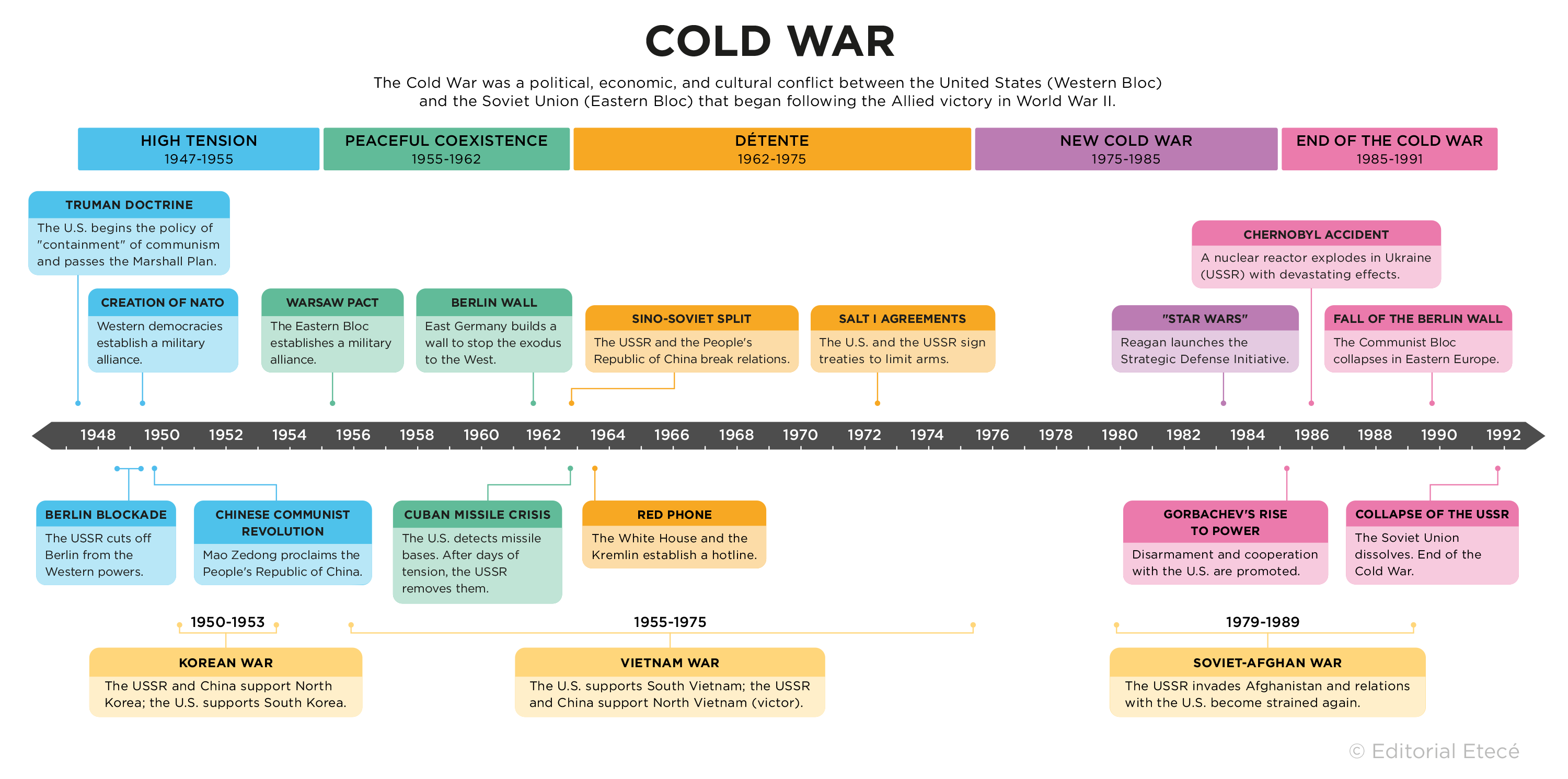
The estrangement between the Soviet Union and the Western powers (the United States, the United Kingdom and France) had begun in 1917 with the triumph of the Bolshevik revolution in Russia.
Following the outbreak of World War II, the German invasion of Russian territories led the Soviet Union to ally with the Western powers. The Allies succeeded in defeating European fascism and Japanese expansionism, but their agreement began to weaken before the end of the war.
With the signing of the treaties at the end of World War II, the victorious powers started to confront each other and compete for the control of territories and their influence on the rest of the countries. Thus began the Cold War in 1947, a lengthy period of rivalry between the United States and the Soviet Union that defined international relations for nearly half a century.
The two blocs of the Cold War
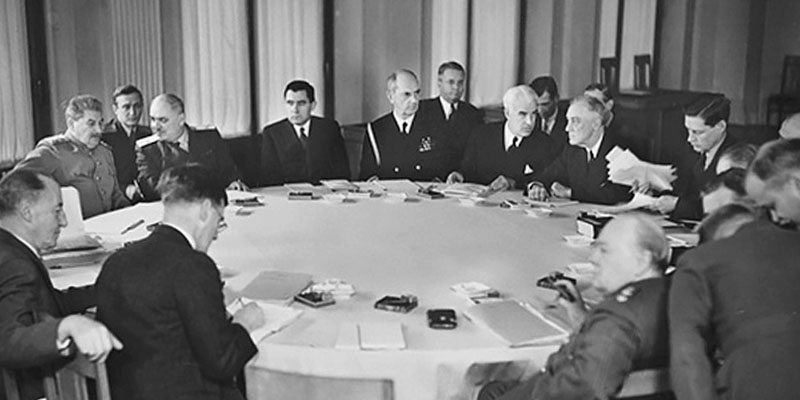
During the Cold War, countries worldwide aligned around the two blocs. For geographic and ideological reasons, the sphere of influence of the United States was termed the "Western bloc" while that of the Soviet Union came to be known as the "Eastern bloc". In their struggle for the control of resources, territories and political influence, each country devised different strategies to consolidate its power.
Formation of the Western Bloc
To prevent the growth of communism in European countries devastated by World War II, the United States implemented the "Marshall Plan". This economic plan aimed to provide technical and financial assistance for the rapid recovery of European economies, the increase of trade, urban reconstruction, and the improvement of the quality of life of the population.
In 1949, fearing Soviet power, the Western powers founded the North Atlantic Treaty Organization (NATO). In the years that followed, the signatory powers created different organizations like the European Coal and Steel Community, the European Atomic Energy Community, and the European Economic Community, which integrated the Western bloc politically and economically.
Formation of the Eastern Bloc
After World War II, Stalin sought to maintain control over the territories he had gained and to expand his influence in allied countries in the region.
In the early post-war years, the Cominform (Information Bureau of the Communist and Workers' Parties) was created with the purpose of managing the communist parties of the Eastern bloc in accordance with the directives of the USSR, and the Comecon (Council for Mutual Economic Assistance) to foster the economic cooperation among these countries.
In addition, the Warsaw Pact was established, whereby the signatory countries undertook to support each other in the event of military confrontations.
The arms and technological race during the Cold War
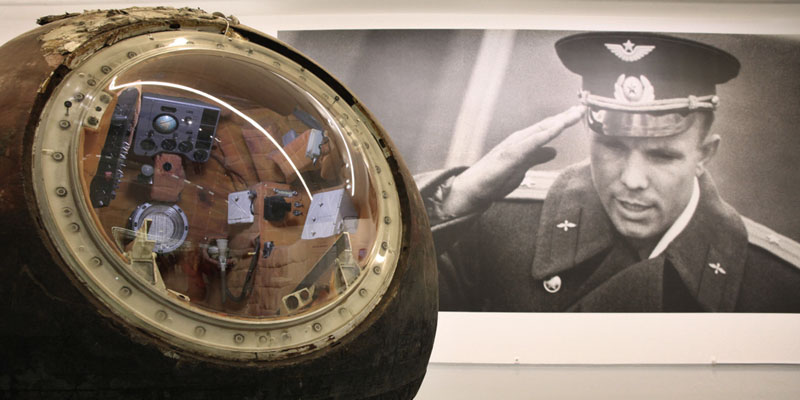
Following the confrontations of World War I and World War II, the world’s great powers knew that political and economic hegemony was based on the possession of armaments.
During the decades of the Cold War, both the United States and the USSR as well as the different powers involved invested millions of dollars and resources in the development of the war industry. This, in turn, increased tensions between the superpowers and the fear of the outbreak of a third world war.
Industrial competition between the United States and the USSR particularly manifested itself in three domains: the nuclear race, the military race, and the space race.
Nuclear Arms Race
By 1945 the United States had developed the nuclear bomb, and had dropped two bombs on Japan (on Hiroshima and Nagasaki) at the end of World War II. Since then, the USSR had allocated resources to the development of nuclear technology. In 1949, they conducted their first atomic bomb test, ending the United States' monopoly as the sole nuclear power on the planet.
In the decades that ensued, both superpowers developed hydrogen bombs with an even higher level of destructive capacity. In order to prevent the use of nuclear weapons (and the subsequent counterattacks), the United States and the USSR signed agreements to stem the spread of nuclear technology.
Nevertheless, scientific developments continued, and today nine countries possess nuclear weapons (United States, Russia, China, France, United Kingdom, India, Pakistan, Israel, and North Korea).
Military-industrial complex
Both in the US and in the USSR, groups of businessmen, politicians and high-ranking military officials pressed their governments to increase military expenditures.
During the long decades of the Cold War, the military industry became one of the most profitable sectors worldwide.
Space Race
In 1957, the USSR successfully launched the first artificial satellite, named Sputnik I, whose purpose was to receive and broadcast radio signals. A month later, aiming to prove that a living being could pass through the atmosphere and survive in zero gravity, the Russians sent the dog Laika aboard the Sputnik II.
In 1961, the USSR sent the first astronaut, Yuri Gagarin, into space. A few months later, the United States sent the second: Alan Shepard. In 1967, the United States initiated the Apollo project intended to land on the Moon. In 1969, Apollo 11 made a successful landing and Neil Armstrong became the first man to walk on the Moon’s surface.
Military conflicts during the Cold War
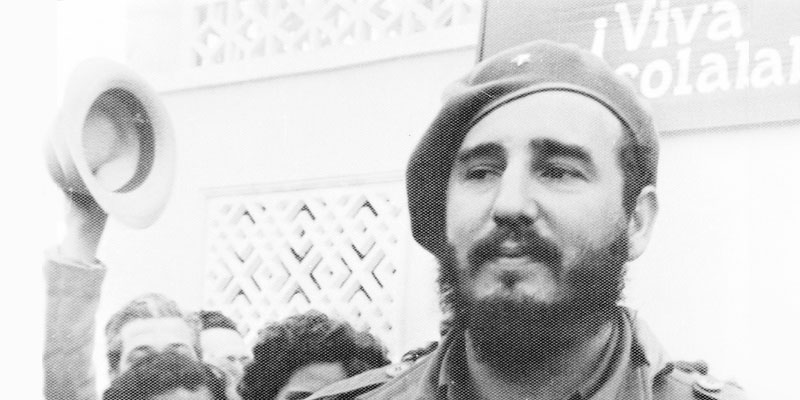
Among the major military conflicts that unfolded during the Cold War were:
- Korean War (1951-1953). After World War II, the different political factions on the Korean peninsula contested for power and the direction of the new government through military confrontation, in which the United States and the Soviet Union were directly involved. At the end of the conflict, the peninsula was divided in two: to the north, the Democratic People's Republic of Korea (supported by the USSR), and to the south, the Republic of Korea (supported by the United States and the UN).
- Missile Crisis (1962). Since 1959, the Cuban Revolution installed a socialist regime led by Fidel Castro, which opposed the economic exploitation of the country by the United States. The latter invaded the Cuban coasts but the troops were defeated. Cuba allied with the USSR, allowing the establishment of medium-range missiles on its territory. In response, American President Kennedy threatened a sea, land and air attack on Cuba. However, in light of the rapidly escalating tensions, Kennedy and Khrushchev (leader of the USSR) began secret negotiations to avoid nuclear war. They agreed to remove the missiles from Turkey and Cuba respectively, to set up a Washington-Moscow hotline, and to limit future nuclear armament.
- Vietnam War (1955-1975). Following World War II, several independence movements began to emerge in French-controlled Southeast Asia. In Vietnam, communist leader Ho Chi Minh led the armed group Viet Minh, whose objective was to free themselves from France and establish an independent country under the communist regime. In 1954, Vietnam was split into two states which, the following year, began a war that lasted over two decades. The north, controlled by the communists, had the support of the USSR while the south, controlled by the liberal Vietnamese, had the support of the United States and France. In 1975, North Vietnam defeated the South and achieved the unification of the country under a communist regime. This is considered the most disastrous defeat for the US during the Cold War.
- Proxy wars. Other military confrontations that occurred within the context of the Cold War, where the superpowers intervened either directly or indirectly, included the Greek Civil War, the First Afghan War, the Lebanese Civil War, the Angolan War, the Indo-Pakistani War, and the Gulf War.
- Division of Germany. Following World War II, the Allies divided German territory amongst the United Kingdom, the United States, France, and the Soviet Union. With the onset of the Cold War, the territories occupied by the Western powers became unified into the Federal Republic of Germany (under direct US influence). On the other hand, eastern Germany came under the influence of the USSR, establishing the German Democratic Republic. The city of Berlin was split between both administrations into West Berlin and East Berlin. This division led to the construction of the Berlin Wall in the early 1960s, whose demolition in 1989 marked the end of the Cold War.
End of the Cold War

Since the late 1970s, the USSR faced several economic crises that stemmed from an inadequate energy supply (which hindered state-owned companies’ operations), stagnation of steel and metallurgical production, and insufficient agricultural production.
This also generated a technological lag compared to the capitalist world, particularly in telecommunications and information technology. Meanwhile, the state machinery continued to expand, and bureaucracy (public employees) became increasingly large.
Since 1985, Prime Minister Mikhail Gorbachev began to promote a series of reforms, known as Perestroika and Glasnost, intended to strengthen the communist system. He sought to bring the USSR into the international economic arena, and to gradually and partially introduce a market economy (without state intervention). To this end, he granted greater business autonomy and authorized foreign investment in the creation of mixed enterprises (both privately and state-controlled).
Furthermore, he initiated a policy of non-intervention in the countries of the Communist Bloc. He allowed freedom of expression in mass media and promoted an electoral reform, which enabled communism opponents to enter the Parliament.
With the adoption of these measures, communism began to collapse in most of the Eastern Bloc countries. Finally, in 1988, Gorbachev announced the withdrawal of troops from eastern European communist countries.
In each country, the transition to capitalism took on different forms and characteristics:
- In Hungary, communists introduced gradual changes and opted for a peaceful transition and the implementation of a system of free elections that gave the victory, in 1990, to the anti-communist forces.
- In Poland, protests led by the labor union Solidarity caused an increased number of strikes and demonstrations, through which democratic reforms were achieved and, in 1989, free elections took place. In 1990, Lech Walesa (the labor union’s leader) was elected president and initiated a series of reforms that quickly brought Poland closer to the Western capitalist model.
- In Germany, strikes and police repression created an atmosphere of extreme tension that in 1989 led to the division of the ruling Communist Party and the dismissal of Honecker (Prime Minister of East Germany). A few days later, border crossing was opened between the two Germanies and through the Berlin Wall. The following year, free elections were called and, after arduous negotiations, the reunification of the two Germanies under a capitalist regime was achieved.
- In Bulgaria, the day after the fall of the wall, there was a coup within the Communist Party and the governor was replaced by a reformist politician who led to the democratization of the country.
The fall of the Berlin Wall
The fall of the Berlin Wall in 1989 symbolized the fall of the Communist Bloc. The opening of elections in the USSR led to growing tensions within the party between the ultra-reformists, who wanted to impose further reforms in favor of a market economy, and the ultra-conservative communists, who attempted to seize power through a coup in 1991.
A massive wave of popular protests in cities and the internal division of the army halted the ultra-conservative action. Many of the republics that had hitherto been part of the USSR abandoned it and formed a Commonwealth of Independent States (Armenia, Azerbaijan, Belarus, Kazakhstan, Kyrgyzstan, Russia, Tajikistan, Turkmenistan, Ukraine and Uzbekistan), while others opted for full independence (Estonia, Latvia, Lithuania and Moldova).
Following the coup, Gorbachev officially resigned on December 25, 1991, and with this act, the USSR ceased to exist, marking the end of the Cold War.
Explore next:
Was this information useful to you?
Yes NoThank you for visiting us :)